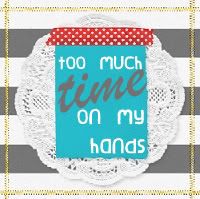I stumbled across this very insightful article and couldn't wait to share this with EcologicalMom readers. Check out these great tips from Dr. Oz and Dr. Roizen on how to keep home contamination to a minimum:
The Kitchen
Garbage disposal: A veritable whirlwind of bacteria sprays up each time the disposal is on, leaving a germ-heavy mist hanging over the kitchen. Make sure the disposal opening is properly covered before flipping the switch.
Garbage disposal: A veritable whirlwind of bacteria sprays up each time the disposal is on, leaving a germ-heavy mist hanging over the kitchen. Make sure the disposal opening is properly covered before flipping the switch.
Sponges and dishrags: These fertile breeding grounds contain more than 100,000 germs per square inch. Microwave wet sponges (not dry—they’ll catch on fire!) for two minutes when they’re particularly dirty. Ideally you’d do this every day to kill bacteria. You can also just use dishrags cleaned in a dilute bleach solution.
Cutting board: Wood cutting boards are in fact safer than plastic. In one study, bacteria on a wooden board dried off in three minutes. Bacteria remained on the plastic board overnight, and multiplied. Wood appears to have a natural, bacteria-killing property that glass and plastic do not.
Countertops: You can’t control all the bacteria in your house, so relax about that. Antibacterial countertops are useless. Clean off your counters with warm, soapy water after preparing food and dry thoroughly. If you’re cooking with potential bacteria (meat, fish or poultry), kill those germs with bleach or an eco-friendly alternative, like vinegar. Do the same in your freezer and refrigerator.
The Bathroom
Toilet: Toilets contain a bacteria line just below the water level, called a biofilm. This bacterial biofilm if very difficult to remove, even with household cleaners. Once airborne, these microdroplets land on everything within the flush zone: toys, cups, toothbrushes, etc. Gross, right?
Toilet: Toilets contain a bacteria line just below the water level, called a biofilm. This bacterial biofilm if very difficult to remove, even with household cleaners. Once airborne, these microdroplets land on everything within the flush zone: toys, cups, toothbrushes, etc. Gross, right?
Some of these pathogens live for a week on surfaces. Each toilet flush creates an unseen mist detectable at head height, which can travel 15 feet from the toilet bowl. This is known as the aerosol effect. Putting the toilet seat down before you flush the toilet will prevent some fecal particles from floating and landing on every bathroom surface. Keep your toothbrush covered or in the medicine cabinet!
Cleaning solutions: All surfaces should be cleaned regularly. This includes the door handle, toilet, sink, faucets, floor and shower/bathtub. Clean inside the toilet at least twice a week with a disinfectant. To avoid transferring germs, clean the sink and toilet with separate cloths.
Showerheads. Occasionally remove your showerheads and soak them overnight in a commercial cleanser or vinegar. This removes the mold and mineral residue that clog the head and contaminate shower water.
The Bedroom
Mattress: We all sweat during the night, up to a half pint of moisture. This goes into the mattress, which is an ideal environment for dust mites.
Add this to the skin we shed as we sleep (up to nine pounds per person per year), giving mites something to eat. These little buggers can irritate your skin and cause swelling. The scary statistics: The average bed is home to about 10,000 dust mites, which can cause hay fever, asthma and other things.
Every six months, turn the mattress over. Vacuum it monthly and replace it every ten years. Use a latex cover or a 1-micron filter sheet cover.
Pillow: Each night you inhale the waste of dust mites that live in the pillow. Use a 1-micron filter pillow cover or a latex cover.
Mattress: We all sweat during the night, up to a half pint of moisture. This goes into the mattress, which is an ideal environment for dust mites.
Add this to the skin we shed as we sleep (up to nine pounds per person per year), giving mites something to eat. These little buggers can irritate your skin and cause swelling. The scary statistics: The average bed is home to about 10,000 dust mites, which can cause hay fever, asthma and other things.
Every six months, turn the mattress over. Vacuum it monthly and replace it every ten years. Use a latex cover or a 1-micron filter sheet cover.
Pillow: Each night you inhale the waste of dust mites that live in the pillow. Use a 1-micron filter pillow cover or a latex cover.
Sources: Dr. Oz & Dr. Roizen, and Yahoo.com















I adore the concept of this idea and I believe we should all give a little time to read the idea inside this to consider this as great motivator to be part of a clean society.
ReplyDeletewaste king legend 8000